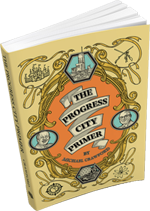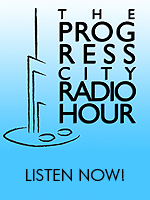Contribute to Our Research |
By Michael - November 18th, 2013 “So,” my millions of fans have asked, “now that you occasionally write for the D23 website will you give up on Progress City?” The answer, of course, is certainly not – the only thing keeping me from writing for Progress City is sheer laziness. But aside from that, there’s plenty that I need to write about that could never appear in any reputable outlet. For one thing, there’s the super intensely nerdy types of stories, that no mass audience would ever care about. And then, of course, there are stories like this – stories about hookers.
As the eyes of the nation turned towards Orlando in October of 1982 for the grand opening of EPCOT Center, they witnessed the arrival of a new theme park based – quite proudly and vocally – on the American free enterprise system. So closely was EPCOT’s development tied to some of the world’s largest corporations, that I’m pretty sure Card Walker would mumble “free enterprise” in his sleep; he would certainly bring it up at the drop of a hat.
“Free enterprise” was critical for EPCOT’s completion, because it was such a large and expensive project; the Disney of 1982 certainly couldn’t fund it on their own, and corporate participants were necessary to underwrite the massive pavilions. This meant nearly a decade of wining and dining doughy rich old white guys with endless steak dinners and pitchers of cocktails; it meant endless private jet flights and limo rides to corporate headquarters, with dinner, drinks, and a show afterwards. And it meant that when the park opened, all these doughy rich old white guys headed down to Orlando to see what their millions had bought, and to check out their new corporate VIP lounges. And this is where the hookers come in!

Free enterprise, after all.
Props to MBI Sgt. Richard Klawe (seriously?) for saying the prostitutes were coming down to “commemorate the opening of Epcot.” Even prostitutes were excited for the 21st century to begin! Surely this was the sauciest thing to happen in central Florida since the Lake Buena Vista key party pandemic of ’76.

Related Posts...
By Michael - October 7th, 2013 
A week ago, on October 1st, fans marked the 30th anniversary of the Epcot Center classic, Horizons. A cursory peek at the internet, or a Twitter search for the hashtag #Horizons30, would reveal that I’m not the only one who regards Horizons as the greatest ride ever created for a Disney theme park. Horizons was by far my favorite ride as a kid, and nothing that has come since has surpassed it in my esteem. It’s a ride that really had something to say, and presented an unironic view of a type of future that we, as a society, seem to have completely abandoned since the 1980s. Horizons was a masterpiece, and was crammed full of highly memorable moments which made quite an impression on young minds.
What’s most amazing is that nearly 15 years after its closure, Horizons seems as popular as ever. After years of fans creating their own Horizons t-shirts, Disney has occasionally dabbled in Horizons logo merchandise in recent years to great success. There’s even a virtual re-creation of the ride in the works, by someone who never even had the chance to see the original. So great looms the legend of this attraction, that it’s earned an entire generation of fans which never even saw it in person, and simply know it from internet videos and other retrospectives.
There’s very little to say about Horizons that hasn’t been said already; if I haven’t made myself clear so far, I miss it terribly. It represents an outlook and a style of presentation that’s sorely missing these days.
You can find all of my previous Progress City articles about Horizons here, including a detailed look at the attraction from 1983. I also wrote a series of brief stories for D23 last week, including some rare photos of the pavilion under construction. The stories include:
Related Posts...
By Michael - July 1st, 2013 My latest pieces on the D23 site…
First, rare photos from the set of the EPCOT Film, the now-famous production filmed during the last months of Walt’s life to pitch the concept of EPCOT to the Florida government and other industries.
If you worked at Walt Disney Productions in the 1980s, you could have auditioned to be Figment’s voice.
Here is the absolutely amazing, totally mindblowing piece of art that was the first conceptual sketch of the Florida Orange Bird.
And finally we have one of the absolute, tip-top favorite things I discovered while doing research for the Epcot 30th anniversary event last year. John Hench’s Captain Saltyhinder.
Also be sure to check out this fantastic story about the Tiki Room by Jim Fanning.
I know a lot of folks have had problems logging in to the new site, but hopefully those bugs are being worked on. If you ever want to catch up on all the stories I’ve written for D23 they can be found here.
Disclaimer: Articles published off-site are edited and may differ from my original text in content, verbiage, and structure.
Related Posts...
By Michael - June 25th, 2013 Here are my latest pieces of ephemera from the D23 website…
First, a look at Donald Duck’s first appearance – years before The Wise Little Hen.
Then, two pieces from the Haunted Mansion – an early script for the show spiel, and a proposed promotion for the ride written by Wally Boag.Lastly, some art from the proposed theme park Walt considered building in Burbank.
Disclaimer: Articles published off-site are edited and may differ from my original text in content, verbiage, and structure.
Related Posts...
By Michael - June 20th, 2013  Orlando Sour? Yes please! One of the first truly awesome (for me) things I dug up while rummaging around the Disney Archives came when we were doing research to prepare for the Epcot 30th Anniversary event last year. In a box of files that once belonged to Imagineer John Hench, there was this odd manila envelope stapled shut with a note from Marty Sklar scrawled on the outside. Marty had been to Walt Disney World (this was in the very early years of the resort) and found that the cocktail lounge at the Polynesian Village Resort was using a shoddy, type-written menu to list their offerings. Judging this an “embarrassment”, Marty asked Hench to draw up a more Disney-quality presentation for the resort. As someone obsessed with early Walt Disney World, the Polynesian, and tiki beverages in general, this was a goldmine.
Read the story and see the art at D23’s site.
Related Posts...
|
The Progress City Primer
 From the Progress City archives comes this collection of 33 tall tales and true from Disney history. Available in paperback, hardback, and ebook formats. |













Recent Comments